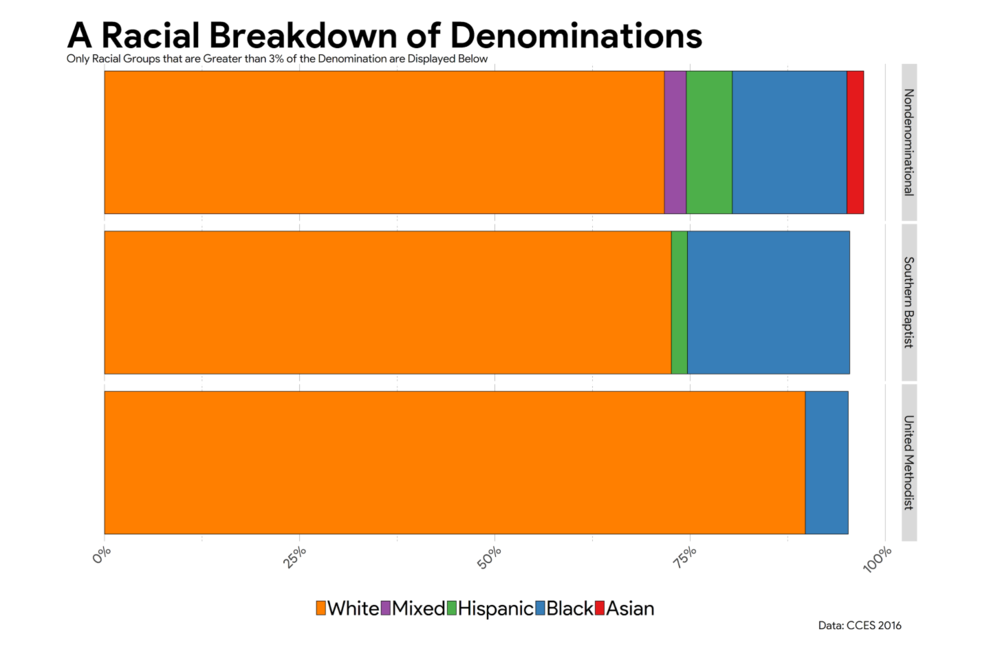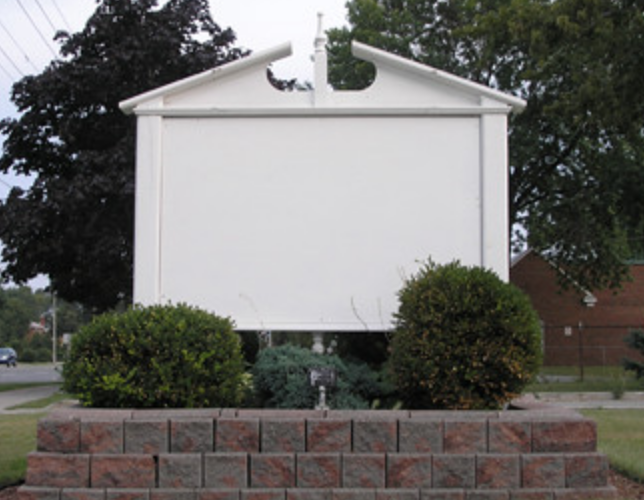
Over the last 46 years, Baptists share of Protestants has gotten just slightly smaller.
While, Methodists are half the size that they used to be, as are Episcopalians.
Lutherans aren’t far behind.
The big shifts are due to non-denoms. They used to be 3%, now they are 23%. pic.twitter.com/YwWgQZ8dek
— Ryan Burge 📊 (@ryanburge) December 15, 2019
Since the opening of this site nearly 17 years ago, I have argued — over and over — that the demographic collapse of oldline Protestantism is one of the most important religion-beat stories of our age.
Why? Well, to cite only one factor out of many: It’s hard to imagine evangelicalism playing the huge role that it plays in today’s public square without the decline of the old mainline world’s power and even, to some degree, its prestige. I know that the old “Seven Sisters” of the mainline world still have cultural clout, especially in newsrooms. You can ask Mayor Pete Buttigieg about that.
GetReligion contributor Ryan Burge of Religion in Public has also done some fascinating work looking at data in the mainline world. But the goal of this post is to point journalists and readers to some of his emerging work on another complicated and powerful factor in the American religion marketplace — the swift rise of radically independent, nondenominational churches. Many of these churches are huge it would be totally wrong to believe that this is merely a white evangelical phenomenon.
In a way, the nondenominational churches play a key role in several major stories. One would be the small, but import, decline in Southern Baptist Convention membership totals. Consider this piece of a Religion in Public blog post on that topic:
Are there differences in theological orientation?
The General Social Survey asks respondents about their view of the Bible and offers three choices: the Bible is the word of God and should be taken literally, the Bible is the inspired word of God but should not be taken literally, and the Bible is an ancient book of fables recorded by men. It’s interesting to note that nondenominational Christians stand about halfway between evangelical and mainline Christianity on matters of the Bible. While 44% of nondenominationals think that the Bible is literally true, 16% more of Southern Baptists espouse literalism, while about 16% less of United Methodists are theologically conservative.
This is an area which casts some doubts on the idea that nondenominationals are just Southern Baptists with a different label. Clearly, they have a more moderate theology than a typical SB evangelical.
Now, what about the role of race in some of these groups?
Take a look at this fascinating chart from Burge, focusing on non-denoms, Southern Baptists and then a mainline church — the soon to splinter United Methodist Church — that is often viewed in news reports as being quite diverse.

What about politics? Here is one more bite from Burge’s work.
It seems plausible that some individuals have left Southern Baptist churches to become nondenominational not for any type of theological reason, but because they disagreed with some of the political positions espoused by famous Southern Baptist leaders. This could manifest itself in a difference in party identification between the groups.
The mean party identification for each of the three traditions provides no support for this hypothesis, however. In fact, there is no statistical difference in the average partisanship of SBC and nondenominational church goers. What may be even more interesting is to note that United Methodists are only slightly more liberal. …
There’s much more here to view and think about. Read it all.










